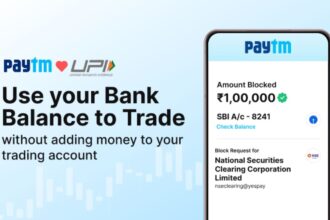Chris Guillebeau is an entrepreneur, the founder and host of Side Hustle School, a daily podcast with more than 2 million downloads a month. He is also a New York Times bestselling author of The $100 Startup.
Chris Guillebeau’s book generally addresses any positive outcome of these questions:
- Do you want to generate some extra cash?
- Do you want a side hustle to catapult a hobby to become a business?
- Do you have a few hours to spare for 27 days?
If you said ‘Yes’ to at least one of the above, this book serves as a guide on the ins and outs of a side hustle from the ground up! The book divides the 27 days into 5 weeks, each week with a maximum of 6 days to work on the side hustle. That said, it is not necessary to allocate 27 days per se, if there are more hours to spare then less than 27 days is needed to have an up and working side hustle. Even though the time frame is 5 weeks, bear in mind that the side hustle will launch on Week 4. That is the beauty of a side hustle, it is different than conventional business that could only sell products that is fully aligned with the business core values–a side hustle is something that is done on the side, whenever there is a need to solve a problem.
Say there is a problem that can be solved, and turned into an opportunity to help other people and make some cash. It is crucial to make sure that the solution is feasible, profitable and persuasive enough to produce money in a short period of time. The way to do this is to observe the surroundings, brainstorm, do some research on the Internet, compare constraint against opportunity and then choose the best 3 ideas that can generate income. The first four days are spent just producing and playing with ideas and then on the fifth day, forecast the expected profit from each selected ideas. The projected profit should be the expected income minus the expected expenses. According to Chris Guillebeau, there is a range of projection that can be created by changing certain variables to achieve the desired projected profit. The three types of estimate that can change as the variable changes are the original estimate, conservative estimate and optimistic estimate.
Having a forecast on the profit provides a view of the side hustle from profit perspective and the initial metric to put the best efforts on is defined. After the first week, the conceptualisation of the side hustle is done and ready to move on to the next big step during Week 2.
Week 2 is when the selection on the side hustle idea is done and the efforts to zoom in on it. In order to make the best selection, it must be pointed out that a successful side hustle has high profitability, high feasibility and is highly persuasive. Two more qualities that can be added are efficiency (how soon can you start?) and motivation (how excited are you?). Chris Guillebeau recommends providing a score for the qualities listed above so that there is an immediate visual comparison between the best 3 ideas.
Naturally, the idea to select as a side hustle should score the most in the High column. It is also a good idea to keep these scores so that it can be referred to in Week 5 when it is time to refine the side hustle. Once the idea has been selected, an investigation needs to follow on who else offers the same product. The discovery of similarities and differences between the selected idea and the competitor’s product might be astounding and yet both discoveries have to be used as ammunition to the selected idea. Follow the path of the best competitor and position how the selected idea is different than the rest. Positioning the selected idea requires 4 elements – a promise, a pitch, a price and a call to action. For example, “Take a private lesson on using Microsoft Access to save time and be more productive. Sessions are RM55 an hour online and RM65 in person. Spots are filling up–reserve yours online at DatabasePro.com”. Notice how each word carries weigh and purpose. It is also part of Week 2 to create your origins story, as Chris Guillebeau finds that customers who are inspired would root for you and your mission.
Week 3 is when the assembling of the nuts and bolts of the side hustle is done. In this phase, it is important to be resourceful and believe that everything is ‘figureoutable’. According to Chris Guillebeau, many abandoned their selected ideas at this stage because they are not willing to do the tedious task of setting up a separate bank account for their side hustle, prepare the invoice template, having an accounting system (which could be as simple as an excel file), understand the tax form–in other words, setting up the medium that allow yourself to be paid! Chris Guillebeau also emphasizes the below as The Side Hustle Shopping List, which should be completed by Week 3.
Scheduling tool is important for side hustles that are based on time commitments such as coaches, mentors to avoid a ping pong game of emails to fit in the best schedule. The last thing anybody needs is a potential customer dropping out because of this. Having defined a proper workflow for the customer from the discovery of the product, right down to the receipt of the product, would allow the creation of seamless transaction and a pleasant user experience for the customers. Try to incorporate many scenarios and be as detailed as possible on each and every action that is required to lead to a purchase and for the customer to receive what they have paid for. Do not underestimate the importance of Workflow as this is where enriching the customer’s experience will lead to making more money.
In the next article, efforts for Week 4 and Week 5 of Chris Guillebeau’s ‘Side Hustle – From Idea to Income in 27 Days’ shall be revealed.




















